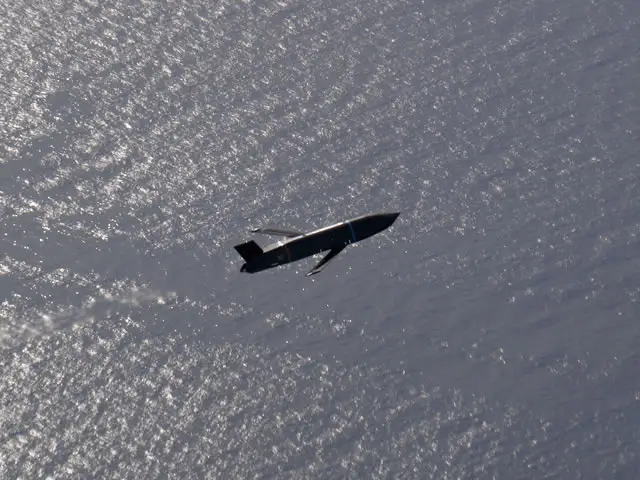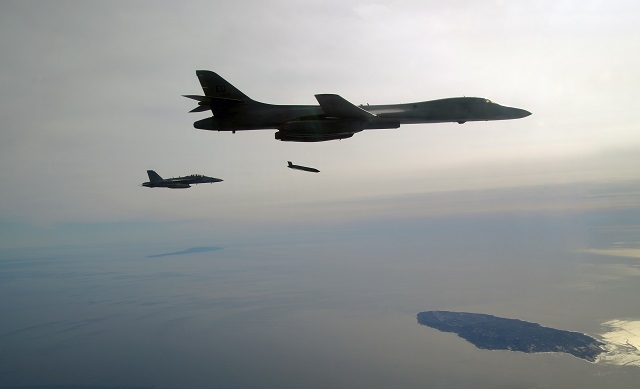Breaking news
U.S. Navy Completes Dual LRASM Test Against Moving Targets.
| 2017
|
|
|||
| a | |||
|
Naval Forces News - USA
|
|||
|
|
|||
|
U.S. Navy Completes Dual LRASM Test Against Moving Targets
|
|||
|
rThe U.S. Navy is closer to delivering its new Long Range Anti-Ship Missile (LRASM) after completing another milestone test flight from an Air Force B-1B Lancer Dec. 8 over Point Mugu Sea Test Range in California. During the test, aircrew aboard the B-1B simultaneously launched two missiles against multiple moving maritime targets for the first time.
|
|||
|
|
|||
 A U.S. Navy Long Range Anti-Ship Missile (LRASM) in flight during a test event Dec. 8 off the Coast of California. (U.S. Navy photo) A U.S. Navy Long Range Anti-Ship Missile (LRASM) in flight during a test event Dec. 8 off the Coast of California. (U.S. Navy photo) |
|||
|
|
|||
|
“The completion of this test marks another significant accomplishment for the innovative team of government and industry professionals committed to fielding dominant surface warfare capability on an accelerated timeline,” said Capt.Todd Huber, LRASM program manager.
When operational, LRASM will provide flexible, long-range, advanced, anti-surface capability against high-threat maritime targets. It will play a significant role in ensuring military access to operate in open ocean and the littorals due to its enhanced ability to discriminate and conduct tactical engagements from extended ranges. Early operational capability for the LRASM is slated for 2018 on the U.S. Air Force B-1 Lancer and 2019 on the U.S. Navy F/A-18E/F Super Hornet. |
|
|
|||
 A U.S. Air Force B-1B Lancer releases the Navy's Long Range Anti-Ship Missile (LRASM) during a test event Dec. 8 off the coast of California. (U.S. Navy photo) A U.S. Air Force B-1B Lancer releases the Navy's Long Range Anti-Ship Missile (LRASM) during a test event Dec. 8 off the coast of California. (U.S. Navy photo) |
|||
|
|
|||
|
LRASM is designed to detect and destroy specific targets within groups of ships by employing advanced technologies that reduce dependence on intelligence, surveillance and reconnaissance platforms, network links and GPS navigation in electronic warfare environments. LRASM will play a significant role in ensuring military access to operate in open ocean/blue waters, owing that to its enhanced ability to discriminate and conduct tactical engagements from extended ranges.
|
|||


























